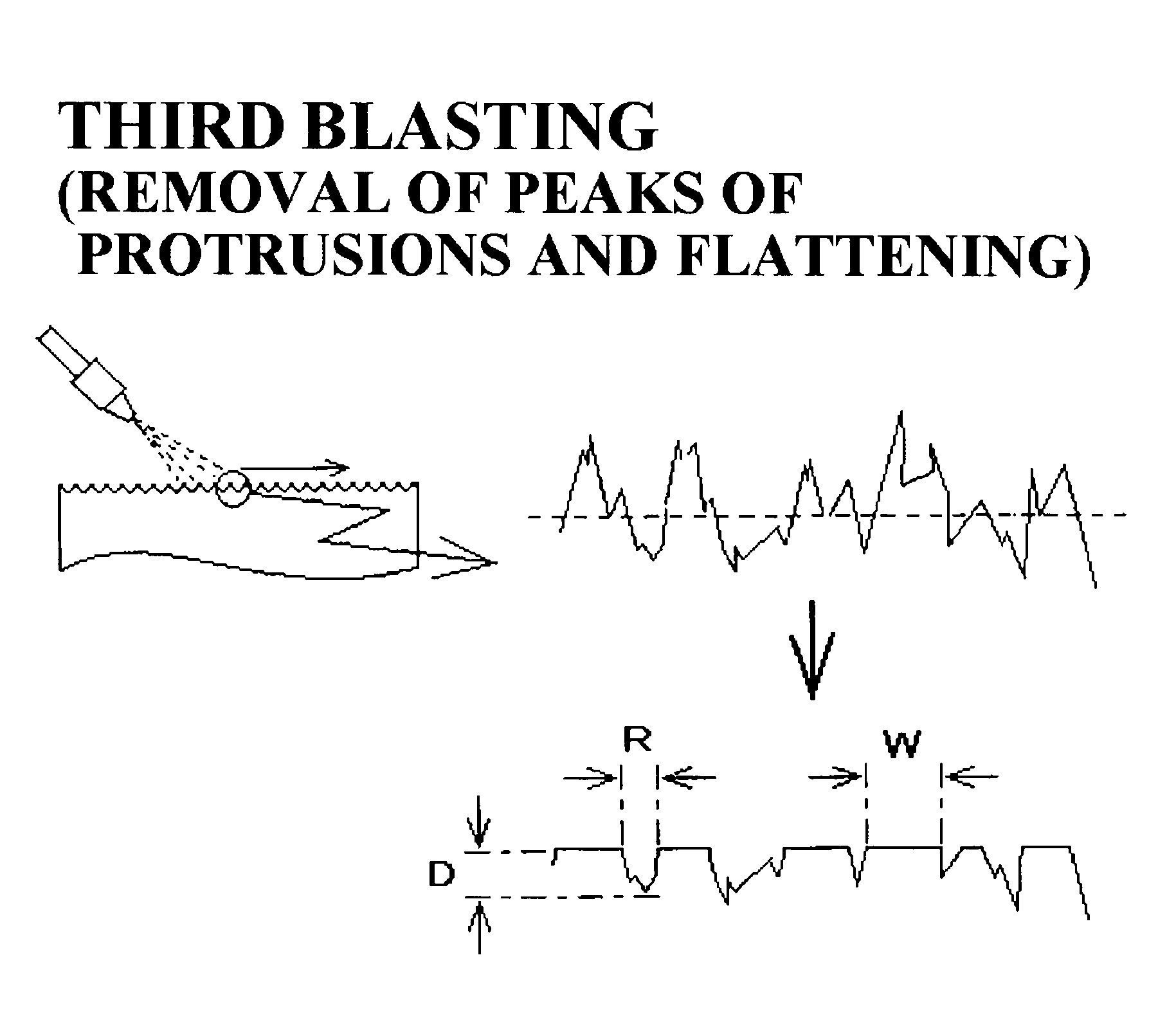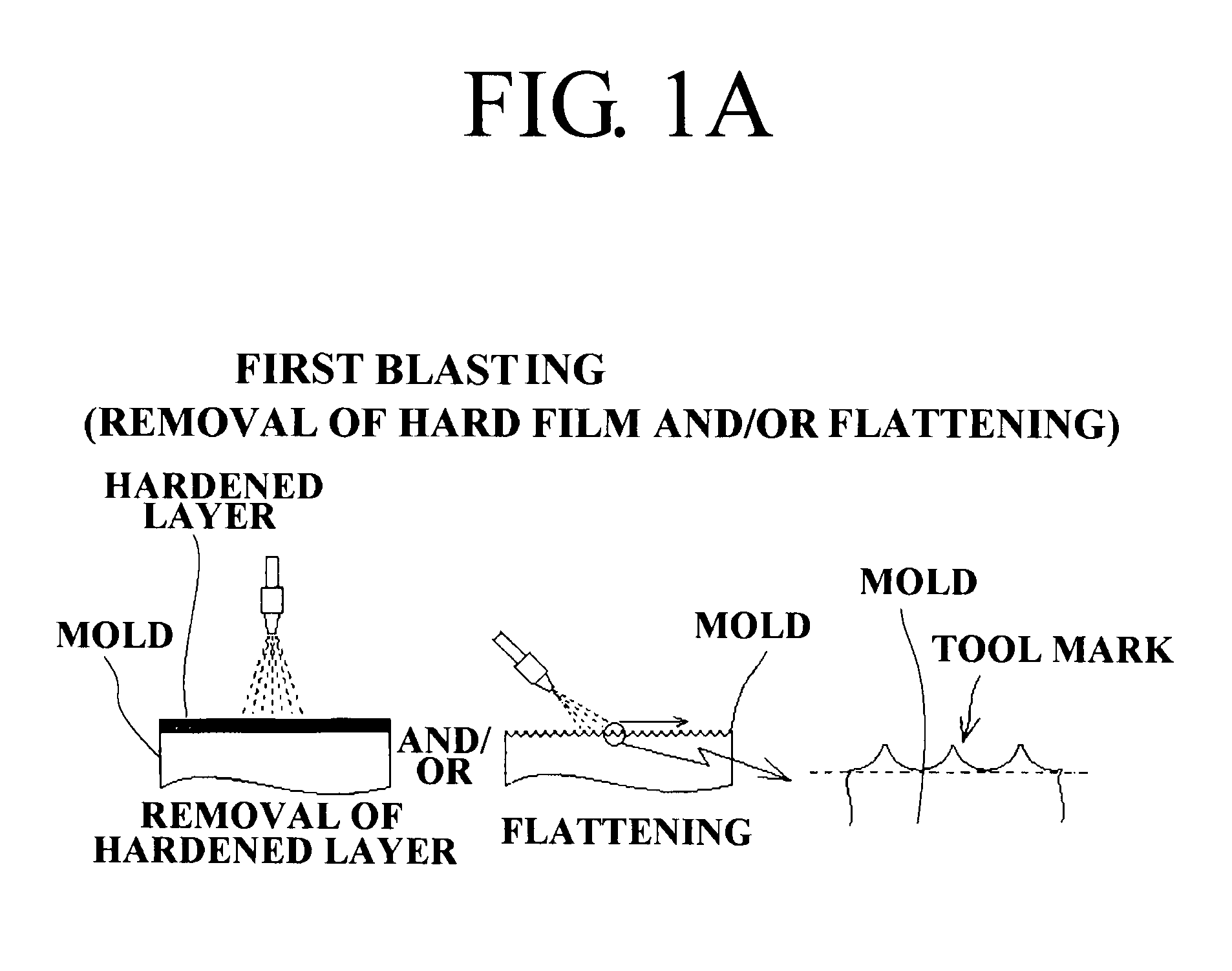Method of treating surface of mold and mold having surface treated by said method
a surface treatment and mold technology, applied in the direction of manufacturing tools, foundry molds, foundry patterns, etc., can solve the problems of reducing demoldability, increasing the number of molds having a complex shape, and significantly reducing the productivity of molding, so as to achieve easy flow, reduce contact resistance when the workpiece is removed from the mold, and easy to even out
- Summary
- Abstract
- Description
- Claims
- Application Information
AI Technical Summary
Benefits of technology
Problems solved by technology
Method used
Image
Examples
Embodiment Construction
[0041]Embodiments of the present invention will be described below with reference to the attached drawings.
Outline of Surface Treatment Method
[0042]A method of treating a surface of a mold of the present invention includes the steps of subjecting the surface of the mold (the surface of a portion that comes into contact with the workpiece) to be treated to a first blasting for removing a surface-hardened layer generated when the mold is fabricated and / or for adjusting the surface roughness, e.g., flattening; a second blasting for creating fine irregularities on the surface of the mold after the first blasting; and a third blasting for flattening peaks of the irregularities created on the surface of the mold after the second blasting.
Object to be Treated (Mold)
[0043]The surface treatment method of the present invention is widely intended for products that are generally called “molds”, and various molds can be treated without limiting the use of the molds.
[0044]Examples of the mold tha...
PUM
| Property | Measurement | Unit |
|---|---|---|
| diameter | aaaaa | aaaaa |
| inclination angle | aaaaa | aaaaa |
| inclination angle | aaaaa | aaaaa |
Abstract
Description
Claims
Application Information
 Login to View More
Login to View More - R&D
- Intellectual Property
- Life Sciences
- Materials
- Tech Scout
- Unparalleled Data Quality
- Higher Quality Content
- 60% Fewer Hallucinations
Browse by: Latest US Patents, China's latest patents, Technical Efficacy Thesaurus, Application Domain, Technology Topic, Popular Technical Reports.
© 2025 PatSnap. All rights reserved.Legal|Privacy policy|Modern Slavery Act Transparency Statement|Sitemap|About US| Contact US: help@patsnap.com



